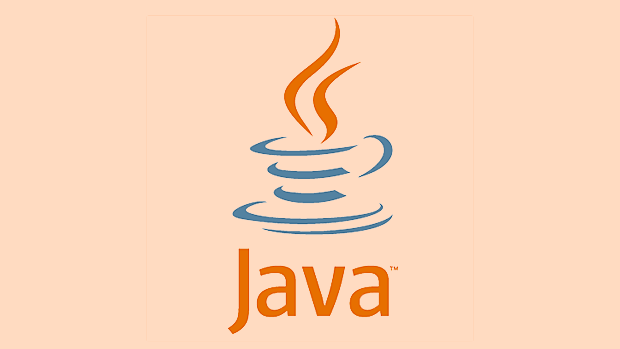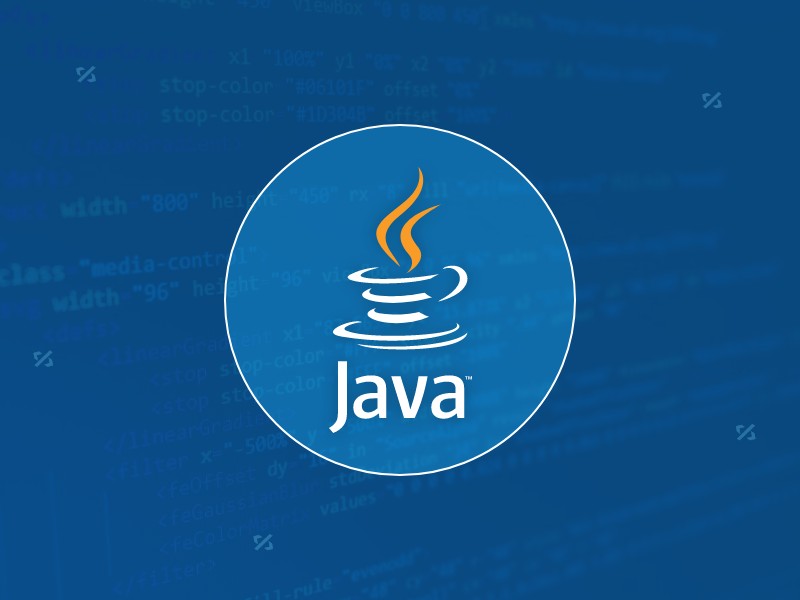In Java, the volatile keyword is used to ensure the visibility of variables in a multi-threaded environment. Its core purpose is to ensure that the latest write value can be obtained during reading. When a variable is declared as volatile, the JVM will prohibit the variable from being cached locally in each thread, forcing all read and write operations to occur in the main memory, thereby avoiding inter-thread communication problems caused by cache inconsistency. It is suitable for the following scenarios: 1. Variables are accessed by multiple threads; 2. The update of variables does not depend on the current value (such as no composite operations such as self-increment are involved); 3. Atomic guarantee is not required. Typical use cases include status flags, one-time safe releases, and weak state synchronization. Unlike synchronized, volatile only provides visibility and orderliness guarantees, and does not provide atomicity and mutually exclusive access capabilities. It should be noted that volatile cannot ensure the atomicity of composite operations like count, nor can it replace a comprehensive synchronization mechanism. Therefore, when multiple threads are involved in simultaneously modifying shared variables, more advanced concurrency control methods such as synchronized or AtomicInteger should be considered.

In Java, the volatile keyword is used to indicate that a variable's value may be modified by different threads. When a variable is declared as volatile , it ensures that any read of that variable will see the most recent write to it, even if those reads and writes occur on different threads.

Visibility Across Threads
One of the main reasons to use volatile is to ensure visibility of changes across threads. Without volatile , each thread might keep its own copy of a variable in local memory (like CPU cache), which can lead to stale data being read.

For example, imagine one thread updating a boolean flag while another thread checks it in a loop. If the flag isn't volatile, the second thread might never see the updated value because it keeps reading from its cached version.
Declaring the flag like this:

private volatile boolean running = true;
tells the JVM not to cache the value locally and always read it from main memory, ensuring up-to-date visibility.
When to Use Volatile
You should consider using volatile when:
- The variable is accessed by multiple threads.
- The variable does not depend on its current value for updates (ie, no compound actions like incrementing).
- You don't need atomicity for operations like
i, sincevolatiledoesn't provide that.
Some typical use cases include:
- Status flags (eg,
shutdownRequested) - One-time safe publication (eg, initializing an object reference)
- Weak state synchronization where full locking is unnecessary
If your usage involves more complex operations or dependencies between variables, you're better off using synchronized blocks or classes from java.util.concurrent .
How It Differs From Synchronized
While both synchronized and volatile are used for thread safety, they work differently:
-
synchronizedprovides both mutual exclusion (only one thread can execute a block at a time) and visibility guarantees. -
volatileonly provides visibility and ordering guarantees but not atomicity.
So, if you just need to make sure threads see the latest value and there's no critical section or locking needed, volatile can be lighter weight than synchronized .
Also, entering and exiting a synchronized block establishes a happens-before relationship, similar to how a write to a volatile variable happens before a subsequent read.
Limitations to Be Aware Of
It's important to understand what volatile cannot do:
- It won't make compound operations like
countatomic — those still require synchronization. - It doesn't lock the variable; other threads can still modify it concurrently.
- It's not a replacement for proper synchronization in all scenarios.
For instance, if two threads both try to update a volatile int counter , you can still end up with race conditions. In such cases, using AtomicInteger or synchronized methods would be better.
So, think carefully about whether your shared variable truly fits into the simple pattern that volatile supports.
Basically that's it.
The above is the detailed content of What is the `volatile` keyword in Java?. For more information, please follow other related articles on the PHP Chinese website!

Hot AI Tools

Undress AI Tool
Undress images for free

Undresser.AI Undress
AI-powered app for creating realistic nude photos

AI Clothes Remover
Online AI tool for removing clothes from photos.

Clothoff.io
AI clothes remover

Video Face Swap
Swap faces in any video effortlessly with our completely free AI face swap tool!

Hot Article

Hot Tools

Notepad++7.3.1
Easy-to-use and free code editor

SublimeText3 Chinese version
Chinese version, very easy to use

Zend Studio 13.0.1
Powerful PHP integrated development environment

Dreamweaver CS6
Visual web development tools

SublimeText3 Mac version
God-level code editing software (SublimeText3)

Hot Topics
 Selecting Specific Columns | Performance Optimization
Jun 27, 2025 pm 05:46 PM
Selecting Specific Columns | Performance Optimization
Jun 27, 2025 pm 05:46 PM
Selectingonlyneededcolumnsimprovesperformancebyreducingresourceusage.1.Fetchingallcolumnsincreasesmemory,network,andprocessingoverhead.2.Unnecessarydataretrievalpreventseffectiveindexuse,raisesdiskI/O,andslowsqueryexecution.3.Tooptimize,identifyrequi
 What is the `enum` type in Java?
Jul 02, 2025 am 01:31 AM
What is the `enum` type in Java?
Jul 02, 2025 am 01:31 AM
Enums in Java are special classes that represent fixed number of constant values. 1. Use the enum keyword definition; 2. Each enum value is a public static final instance of the enum type; 3. It can include fields, constructors and methods to add behavior to each constant; 4. It can be used in switch statements, supports direct comparison, and provides built-in methods such as name(), ordinal(), values() and valueOf(); 5. Enumeration can improve the type safety, readability and flexibility of the code, and is suitable for limited collection scenarios such as status codes, colors or week.
 Applying Semantic Structure with article, section, and aside in HTML
Jul 05, 2025 am 02:03 AM
Applying Semantic Structure with article, section, and aside in HTML
Jul 05, 2025 am 02:03 AM
The rational use of semantic tags in HTML can improve page structure clarity, accessibility and SEO effects. 1. Used for independent content blocks, such as blog posts or comments, it must be self-contained; 2. Used for classification related content, usually including titles, and is suitable for different modules of the page; 3. Used for auxiliary information related to the main content but not core, such as sidebar recommendations or author profiles. In actual development, labels should be combined and other, avoid excessive nesting, keep the structure simple, and verify the rationality of the structure through developer tools.
 What is the JDK?
Jun 25, 2025 pm 04:05 PM
What is the JDK?
Jun 25, 2025 pm 04:05 PM
JDK (JavaDevelopmentKit) is a software development environment for developing Java applications and applets. It contains tools and libraries required to compile, debug and run Java programs. Its core components include Java compiler (javac), Java runtime environment (JRE), Java interpreter (java), debugger (jdb), document generation tools (javadoc) and packaging tools (such as jar and jmod). Developers need JDK to write, compile Java code and develop with the help of IDE; without JDK, Java applications cannot be built or modified. You can enter javac-version and java-version in the terminal
 VSCode debugger for Java setup guide
Jul 01, 2025 am 12:22 AM
VSCode debugger for Java setup guide
Jul 01, 2025 am 12:22 AM
The key steps in configuring the Java debugging environment on VSCode include: 1. Install JDK and verify; 2. Install JavaExtensionPack and DebuggerforJava plug-in; 3. Create and configure the launch.json file, specify mainClass and projectName; 4. Set up the correct project structure to ensure the source code path and compilation output are correct; 5. Use debugging techniques such as Watch, F8/F10/F11 shortcut keys and methods to deal with common problems such as class not found or JVM attachment failure.
 How do I set up VS Code for Java development?
Jun 29, 2025 am 12:23 AM
How do I set up VS Code for Java development?
Jun 29, 2025 am 12:23 AM
To use VSCode for Java development, you need to install the necessary extensions, configure the JDK and set up the workspace. 1. Install JavaExtensionPack, including language support, debugging integration, build tools and code completion functions; optional JavaTestRunner or SpringBoot extension package. 2. Install at least JDK17 and verify through java-version and javac-version; set the JAVA_HOME environment variable, or switch multiple JDKs in the status bar at the bottom of VSCode. 3. After opening the project folder, make sure the project structure is correct and enable automatic saving, adjust the formatting rules, enable code checking, and configure the compilation task to optimize the opening.
 Windows search bar not typing
Jul 02, 2025 am 10:55 AM
Windows search bar not typing
Jul 02, 2025 am 10:55 AM
When the Windows search bar cannot enter text, common solutions are: 1. Restart the Explorer or computer, open the Task Manager to restart the "Windows Explorer" process, or restart the device directly; 2. Switch or uninstall the input method, try to use the English input method or Microsoft's own input method to eliminate third-party input method conflicts; 3. Run the system file check tool, execute the sfc/scannow command in the command prompt to repair the system files; 4. Reset or rebuild the search index, and rebuild it through the "Index Options" in the "Control Panel". Usually, we start with simple steps first, and most problems can be solved step by step.
 Why use the `Serializable` interface?
Jun 26, 2025 am 01:02 AM
Why use the `Serializable` interface?
Jun 26, 2025 am 01:02 AM
ImplementingtheSerializableinterfaceinJavaallowsaclasstobeconvertedintoabytestreamforstorageortransmission.Asamarkerinterfacewithnomethods,itsignalsthattheclassisreadyforserialization,enablingmechanismslikeObjectOutputStreamtoprocessit.Failingtoimple






